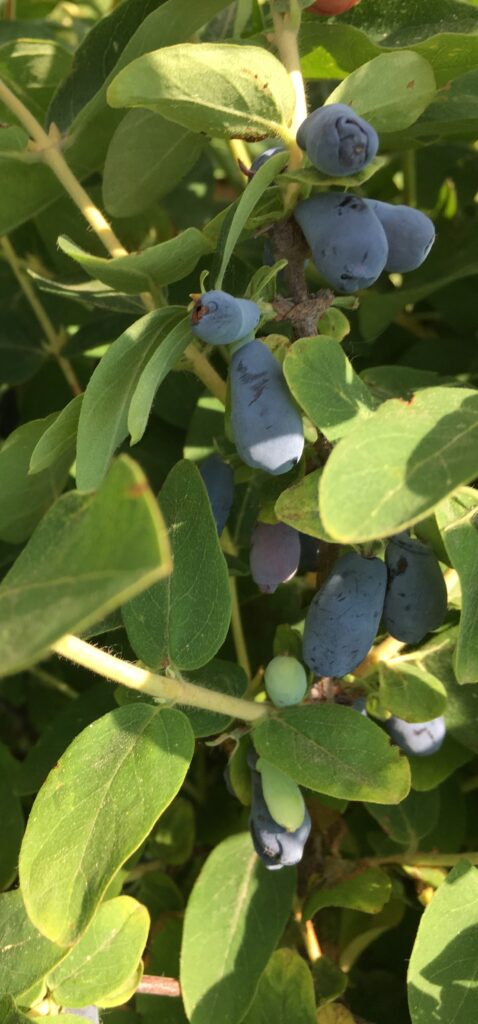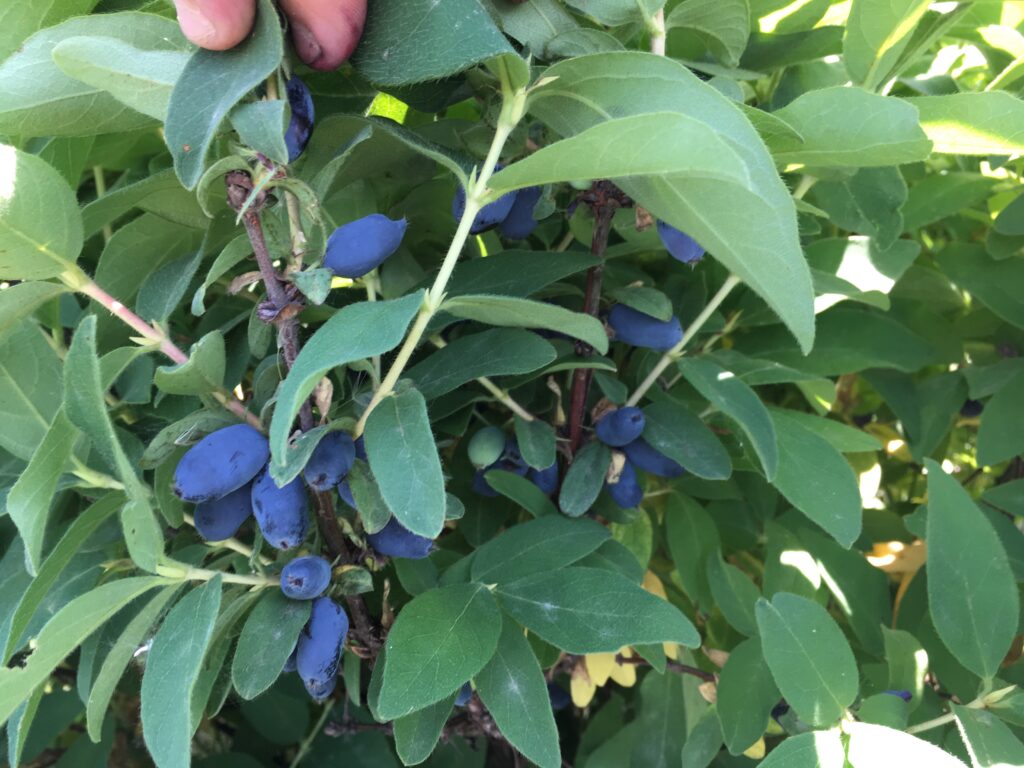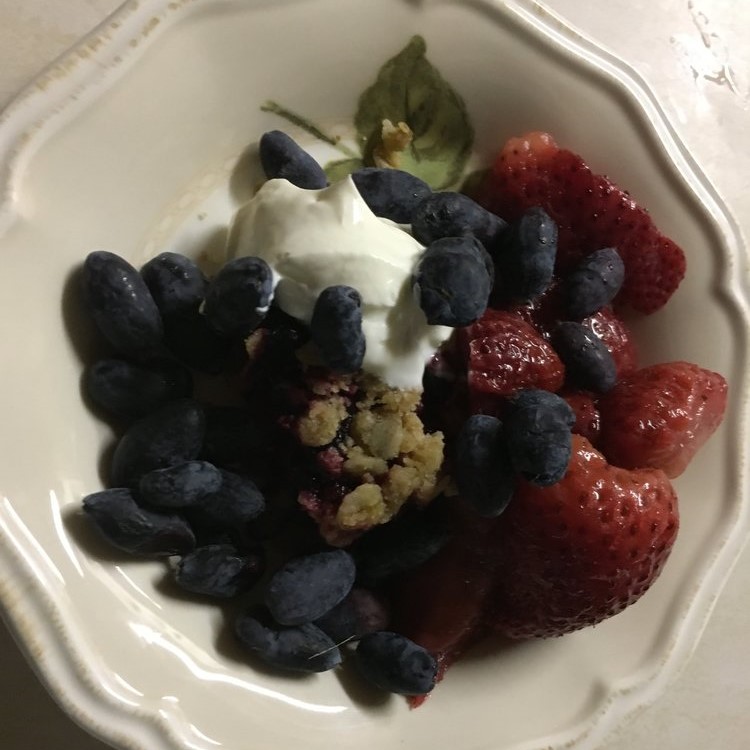
ABOUT HONEYBERRIES
Honeyberries originated from Eastern Siberia, which makes them extremely cold hardy (down to zone 2) and tolerant of a wide variety of soil types and pH levels. Known as haskap in Japan and zhimolost (or blue honeysuckle) in Russia, honeyberries are a member of the honeysuckle family, but lack the invasive qualities of their relatives. Flowering in early spring, honeyberries attract many native pollinators to its small, white and yellow, fragrant flowers. The fruits are elongated blueberry-like berries that ripen in early June, with a unique flavor which has been compared to blueberries, raspberries, juneberries, and black currants. They are great for eating fresh or you can use the berries to make jams and jellies. The tender skins of honeyberries are known to “disintegrate” when eaten, making them a wonderful addition to yogurt, ice cream, and smoothies. Try freezing them for a special, melt-in-your-mouth treat to be enjoyed any time of the year.
Since they are early fruiting, the birds love them which is why we protect them with overhead netting!
Since most honeyberries need at least two varieties planted for cross pollination, we have planted a wide range of varieties including Borealis, Tundra, Blue Forest, Berry Blue, Blue Bird, Blue Belle, Cinderella, Aurora, Beauty, Moxie and Solo. Most of our plants were sourced from Honeyberry USA. Additional varieties were purchased from Rolling River Nursery of California. The other plants were locally-sourced.
After several years, we pulled the Midnight Blue and Night Mist varieties, even though the plants were vigorous. We found that the fruits of these two varieties were so bitter that we could not even make good-tasting jam from them. We have not had this experience with any of the varieties we now grow. In fact, the others are very delicious!
HEALTH BENEFITS
Honeyberries have the highest contents of phenolic acids, anthocyanin, and antioxidants of the berries we grow. They contain significant sources of potassium, calcium, phosphorous, and iron. They have twice the vitamin A and four times the vitamin C as blueberries.
Honeyberries have anti-inflammatory properties, are good for the eyes, fight against colon cancer, and have cardiovascular benefits. They are also a good source of fiber.


USING HONEYBERRIES
Honeyberries can be used in any recipe as a substitute for blueberries – pies, crisps, tarts, scones, muffins, and breads. Joyce made a delicious apple pie sprinkled with Honeyberries!
They can be used in smoothies or salads which make an excellent meal packed full of antioxidants. Or just keep it simple since Honeyberries make a wonderful fresh snack as well!
